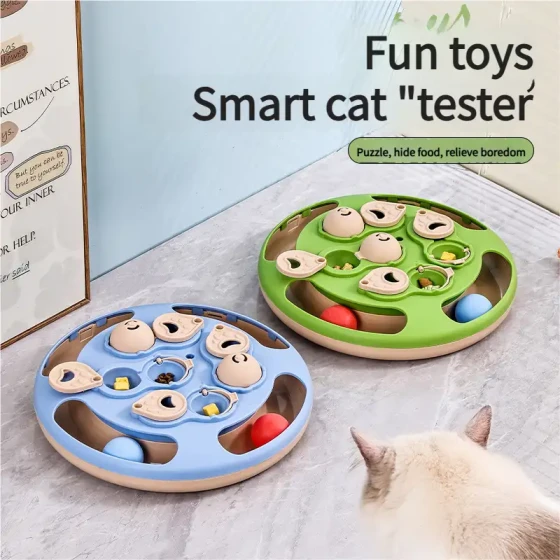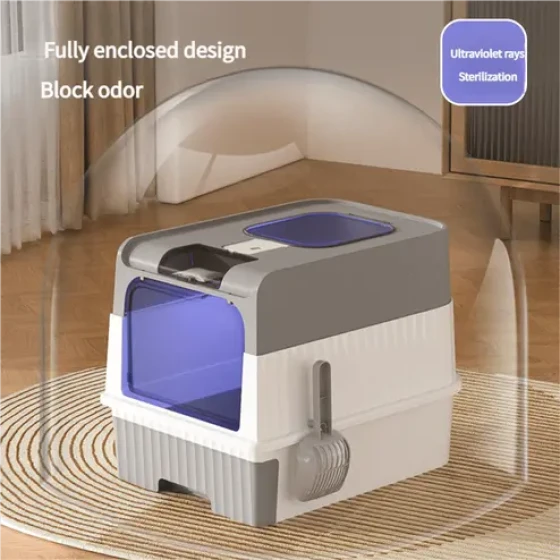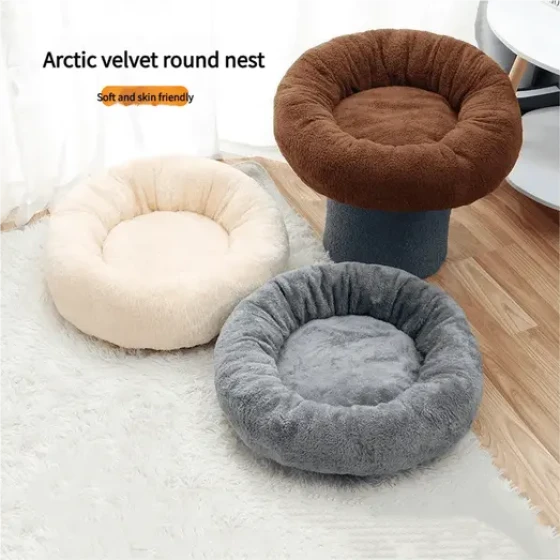Train Your Cat at Home to Use the Toilet

Chinchilla
For cleanliness-loving cats, having a litter box soiled with feces is unbearable, so it’s important to clean the litter box well, preferably immediately after each use. If that’s not possible, cleaning at least once a day is necessary.
Cats dislike changes in their living environment, so the location of the litter box should not be changed arbitrarily. Otherwise, the cat will have difficulty feeling comfortable to relieve itself. The litter box should not be placed in living rooms, hallways, or other busy areas but in quiet places.
Cats have a habit that once a certain place is scented with their excrement, they will use that spot repeatedly. Therefore, after a cat defecates outside the litter box, the smell should be washed away with water or a strong-smelling detergent.
Kitten’s defecation habits
Kittens learn to bury their feces from their mother, which is why your kitten is very willing to use the litter box. Stimulated by the smell of its feces, the cat will bury its feces, even without soft soil. If no litter box is available, the cat will look for flowerpots, flower beds, or sand pits to relieve itself for burying. Therefore, you must place the litter box in an appropriate location and keep it clean.
Teaching your cat to use the floor drain
My cat is extremely smart; it only took me two weeks to train her to abandon the litter box and squat by the floor drain. This improved the environment, saved cleaning trouble, and reduced a large expense.
During the days of using litter, the floor often looked like fairy dust scattered around, with small white clumps everywhere. My cat often sat on the cabinet and cleaned her paws. I had to follow her around to clean up after her. Now, I’m much more relaxed. However, I must say the training took quite a bit of effort. Fortunately, she is smart and I was persistent, so we succeeded.
If you want to ditch cat litter too, then from now on, don’t add more litter to the box. As the litter gets reduced until it just covers the bottom, pour the litter onto a newspaper laid over the floor drain. To prevent litter from falling into the drain, you can place a perforated plastic sheet on it beforehand, which filters cat urine while holding the litter.
After changing the environment, my cat was reluctant at first. When it was time to relieve herself, she meowed at me as if asking, "Where should I go?" I carried her to the spot and told her, "Here, dear." Although unwilling, when pressed, she would go at that place first. At that time, pour the remaining clean litter back on another newspaper. It’s rather difficult to get her to confidently relieve herself there; she might hold it for more than ten hours. When she meows at you, pay attention—it means she is holding it in urgently. Quickly carry her to the designated spot, call her to relieve herself, and close the door behind you. If she doesn’t meow, she’s going; when she meows again, she’s finished. Through repeated training, success is sure to come.
The hardest part is after removing the newspaper. Even though you repeatedly remind her, because she has a habit of digging litter to cover feces, once no markings are left, she might find another place to relieve herself. In two weeks, she did this once, for which I scolded her. Afterwards I regretted it: I should have blamed myself for not watching her carefully. Owners must be patient! I wish you and your cat success soon!(Source:PetsZone)



